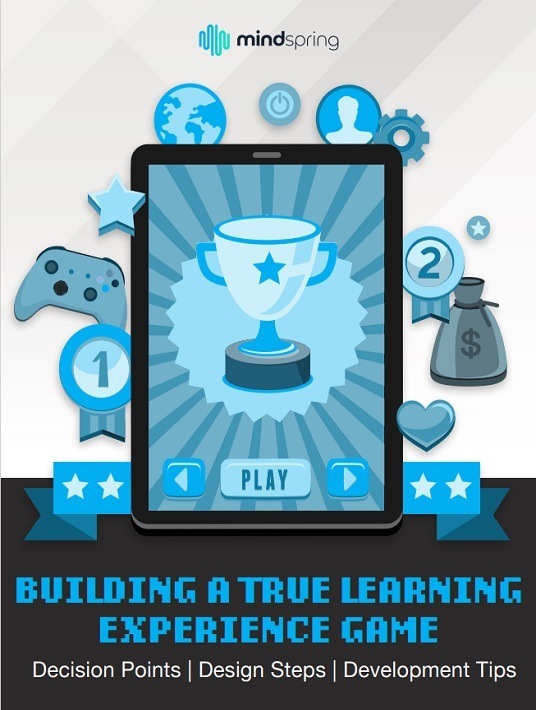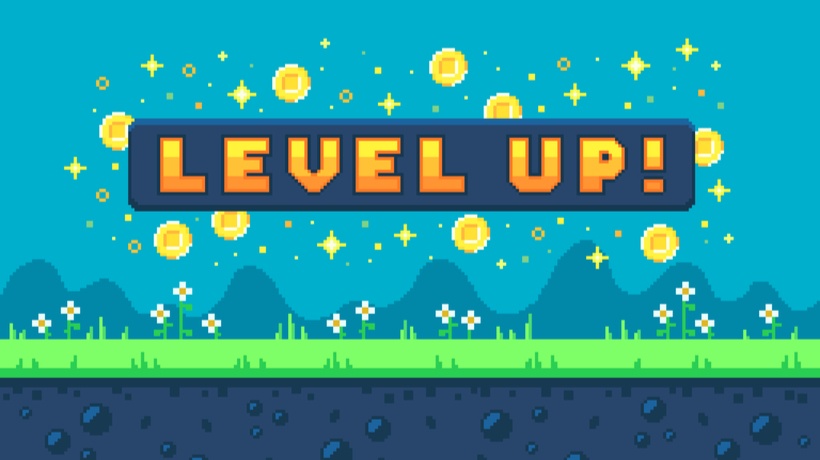Secrets To Create The Best Serious Games
This article is part of a series on building a true training game to increase managers’ understanding of corporate finance. What you are about to read is a fable. The company, AshCom, is fictional, but the learning challenges faced by Kathryn, AshCom’s CLO, and her team are real and commonly shared by learning teams in large organizations. It is our hope that you will be able to connect with the characters, their challenges, and the solutions they discover. We also invite you to read the first eBook in the series.

The Instructional Designer
Adeena was not used to leading meetings or being the center of attention. She preferred to have her earbuds in listening to music while doing her job as an instructional designer at AshCom, a manufacturing company with 7,000 employees. Other members of AshCom’s learning team were certainly louder than Adeena, especially those who were more of the creative type. But Adeena liked and trusted her learning team colleagues, and they felt the same about her. They appreciated the abilities of each other.
In this particular meeting, Adeena would lead the team in a discussion of game theory and gamification. She had loved playing games since she was a little girl and had grown up to be an experienced player of strategy games like Age of Empires, SimCity, Empire Earth, The Settlers, Minecraft, and Civilization.
Kathryn, the Chief Learning Officer at AshCom, asked Adeena to do some research on the topic of games and present her thoughts to the group. She wasn’t nervous about speaking in front of the team, but she felt some anxiety about whether she would present the right material.
The anxiousness was heightened by the fact that the request for a top-flight learning experience came from Kurtis, the CFO at AshCom, and had to do with financial literacy. Kurtis wanted to see how the management team’s understanding of how AshCom’s financial systems worked and how they might make daily decisions more in line with that system.
Game Theory And Gamification
During her research into game theory and gamification, Adeena had to remind herself several times that she was not being asked to be the subject matter expert on corporate financial systems. Her main contribution would be thought leadership on learning through games, a subject in which she had a high level of expertise. This was her wheelhouse.
Kathryn opened the two-hour meeting. In the meeting were Darryl and Martina who were Adeena’s colleagues at Globex before it was acquired by AshCom. She had worked with them for more than five years before they all joined the AshCom team. Darryl and Martina were both instructional designers and highly creative.
The other members of the learning team played different roles. Maggie had been around the longest, more than 20 years at AshCom. She was the first person dedicated to learning. Her first title was “Training Director.” That title changed over time as Maggie realized she did not want to be a director and that “training” was not actually what she did. Her focus was on instructional design, and her heart was in giving AshCom team members a great learning experience.
Alishia was younger. Adeena guessed she was in her mid-20s although she never directly asked. Alishia was a recent graduate of an instructional design program and was currently enrolled in a master’s program. Alishia was the person most up to date on the tech side of learning.
Michael and Amy rounded out the team. Amy was not actually an employee of AshCom. She was a consultant who worked with numerous large companies in the Minneapolis area including some of the local Fortune 500s like UnitedHealth, Target, BestBuy, and 3M.
Kathryn, AshCom’s CLO, had developed a deep appreciation for Amy’s breadth of wisdom and experience. She knew firsthand what other large companies were doing and was up on the latest trends and best practices.
Michael was a bit unusual for the team. He was a retired college professor who had deep high education administration experience. He was a strategic thinker. While not full time, Kathryn almost always included Michael in meetings when big ideas were being discussed. This was that kind of day.
The topic of the conversation⎯game theory and gamification⎯certainly qualified as a big idea. Kathryn and her team had worked on several other big ideas. They developed custom authoring tools to give them more options for creativity. They also created an app that was developed for sales training for AshCom’s sales team of almost 400 people. It was an incredible achievement that sped up the time it took to get new salespeople fully competent in AshCom’s sales approach. The sales team was actually excited when new learning opportunities were released. They knew it would improve their performance. Most of the sales team had even grown adept at using the app in sales meetings with clients to show them the benefits of AshCom’s products. It was a win all the way around.
Building The App
All this connected back to Kurtis, AshCom’s CFO. The decision to build the app required a significant financial commitment. Kurtis listened carefully to the arguments for the expenditure and decided, in the end, to commit the funds Kathryn and her team requested. It paid off.
When Kurtis wanted to increase AshCom’s financial literacy for its managers, he naturally brought the problem to Kathryn. Kathryn tasked Adeena with doing the research and presenting her findings.
After Kathryn’s introduction and overview, Adeena stood before six of her colleagues and her boss in AshCom’s conference room.
Adeena said, “I want to begin by telling you that I’m really excited about this topic. I love games and have played a bunch of them since I was a little girl. There is so much to cover, and we only have two hours for this discussion. Actually, a little less…”
Kathryn took this moment to jump in. “Adeena, I know I’ve asked you to take on an enormous topic. If we are not able to cover everything today, we will find additional time to meet. Getting gamification right could mean an enormous leap forward for our learning team, and we will give it the time it needs. Sorry for my early interruption, but I wanted that to be clear from the start.”
Adeena seemed to calm a bit. “I appreciate that. I want to start with some very broad statements about games.” Looking at Michael, she said, “Maybe even a little history…” Michael gave her a thumbs up without saying anything, not wanting to break her flow of thought.
Games As Teaching Tools
“Most games were invented as teaching tools. They have been the ultimate learning experience for children. Many sports were invented to teach young people to go to war. Offense. Defensive. Goals. Learning to work in a team environment.”
Adeena continued, “Other timeless games like checkers and chess teach people to think strategically. Those of you who play know that you have to be thinking several moves ahead if you want to win. Some of my best strategy learning experiences came from playing chess with my dad. I received immediate feedback and always had another chance to try again if I lost.”
“When Kurtis, our CFO, brought this challenge to Kathryn,” said Adeena, “he ended that conversation by talking about ‘competition’ without getting into the specifics of how to build it or what form it might take. This makes sense to me. If you asked me as a child if I wanted to learn about how capitalism works, I would have thought I was being punished. If you asked me to play Monopoly, I would be all in.” Everyone nodded.
The Happiness Hormone
Adeena continued, “I think the only way we can make financial systems interesting and, dare I say it, fun, is to do it by playing a game. The brain science is pretty clear. We don’t get much dopamine from learning something we have no interest in. But we do get this ‘happiness hormone’ from both playing and winning almost no matter the actual topic of the game. Sometimes, even when we lose the game.”
Maggie, who had been at AshCom longer than anyone else in the room, interjected, “You know, we’ve added some game elements to some of our learning in the last few years. I can remember some courses in safety training that had a leaderboard so different groups in different plants could compare their total scores with others. Some of our sales courses were set up so that learners could only advance to a higher level when they completed their current level.”
Kathryn continued in this line. “I don’t claim to be an expert on gamification, but I can think of some courses where we included some sound effects for feedback, like a cheering crowd when someone answered a knowledge check question correctly.”
Darryl nodded in agreement but added, “People actually got sick of that sound pretty quickly. Seemed like one of those things that have to be limited.”
The Fun Factor
Alishia, the youngest person in the room, asked a blunt and direct question. “Do we really expect people will get excited about corporate finance with leaderboards and levels and some sound effects? I don’t want to rain on your parade, but that wouldn’t do it for me. Would it for anyone else here?”
Amy, the consultant, responded with an emphatic, “Nope!” Everyone in the room laughed.
Michael responded, “I can tell you that back when I was in higher ed, we knew that the less appealing the topic was, the more creative horsepower we needed to have in designing the learning experience. I’m not saying we didn’t try to be creative in everything we offered. But when the topic was not interesting to students, and especially when it was something most everyone had to take, it required us to think outside the box.”
Kathryn, realizing their time was passing quickly, said, “Adeena, you’ve done more thinking about this than anyone else. And you’ve probably spent more time playing games than the rest of us, maybe combined. Do you have a recommendation for us for this financial literacy topic that our CFO wants built?
“I do,” said Adeena. “I was pretty sure I knew the likely solution even before I started my research, but I needed to do the reading and thinking. I also needed to have this discussion with all of you.”
“So,” said Martina, “what are we going to do?”
Adeena responded, “I’m glad Kathryn committed to additional time because I know we have to wrap this up. I want to talk about building a true game. Not gamified learning. An actual game people can play.”
Alishia blurted out, “I would love to be part of that!”
Building The Best Serious Game
Kathryn responded but more calmly, “I would too. I think we have a lot more to learn about what it takes to build a true game. Building something like this as a one-off might be too much to ask. But if we can learn to build a game, we could apply this skill to all sorts of other learning experiences. I’m sure Kurtis will like the idea. It goes in the direction of competition that he mentioned when we first met. He will like it even more if we tell him that we can use this in other ways too.”
Kathryn paused to let this sink in. She looked at Adeena for a few seconds and said, “You know what comes next, right? I suspect you’ve already started putting together what you need to present to us next.”
“Of course,” said Adeena confidently. “Please give me a week, and I’ll be ready to lead us through the conversation about what it takes to build a true game.”
“Wonderful,” said Kathryn. “We will reconvene one week from today, and please block out two hours. I think we have much to consider here.”
With that, the learning team went back to their cubicles. On their way out, each stopped to thank Adeena for her research and presentation. Adeena had clearly taken a step forward and left with a confident smile.
Conclusion
To read the rest of the chapters in this series on building a true game to teach financial literacy and to see Kathryn and her team solve their challenges, please download the eBook Building A True Learning Experience Game: Decision Points, Design Steps, And Development Tips.








